The AMD Radeon RX 5700 XT & RX 5700 Review Navi Renews Competition in the Midrange Market AnandTech
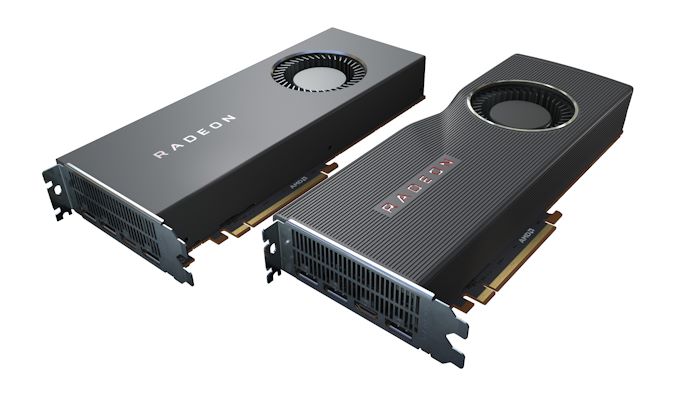
There had been teasers, press conferences, architectural announcements, and pricing games all around – and all before the primary card has even shipped. The run-up to the release of AMD’s new Radeon RX 5700 series of video cards has been a dynamic and noteworthy time, and a totally becoming final results for a own family of playing cards named after AMD’s mythical Radeon HD 5700 collection. However, at some point all the showmanship must come to an stop and the cards will fall in which they will: release day is upon us for AMD’s Radeon RX 5700 collection and RDNA GPU structure.
I’m no longer sure there’s something traditional approximately an AMD video card launch at this point, however nowadays’s launch is about as non-traditional as they come, right on down to the Sunday launch date. AMD introduced their video playing cards nearly a month ago at an epic (ed: that’s EPYC) E3 occasion, taking the wraps off of both their new CPUs and GPUs. Rather than preserve whatever lower back, AMD came to E3 with the whole lot the front-loaded: specs, fees, architectural info; the whole lot besides a pile of cards to sell. So we’ve been awaiting this moment for a while now, to check AMD’s claims approximately energy, performance, and features, and see how they translate into actual-world gaming performance. AMD has a lot that they need to do within the video card area, and using high on their achievement with Zen the business enterprise’s ambition is once again palpable.
Getting all the way down to business then, these days is the launch of AMD’s subsequent generation of video cards, the Radeon RX 5700 series. Aimed at what these days is the midrange phase of the video card market, AMD is looking to carve out a new location for the company in the hearts of gamers who're looking for excessive overall performance video playing cards that won’t break the bank. These parts are, in flip, primarily based on AMD’s Navi 10 GPU, that's the primary GPU using the organisation’s new RDNA architecture. And, while Navi 10 isn't always AMD’s first 7nm GPU – an honor the Radeon VII and its Vega 20 beat it to – it’s the first 7nm GPU which you’re simply going to need to pay attention to.
Altogether, AMD is rolling out two(ish) playing cards nowadays. At $399 we have AMD’s new class-leading Radeon RX 5700 XT, that's a full-fledged Navi 10 card with all the trimmings. Meanwhile, for the marginally greater price range aware, we have the $349 Radeon RX 5700 (vanilla), a cut-down Navi 10 card that offers up a few overall performance for lower pricing and lower power intake. Finally, AMD is also launching their very own “Anniversary Edition” model of the 5700 XT, which features a manufacturing unit overclock and could promote for $449. (This card may be a footnote for today’s article, because it’s a restricted-edition card that AMD isn’t sampling)
| AMD Radeon RX Series Specification Comparison | ||||
| AMD Radeon RX 5700 XT | AMD Radeon RX 5700 | AMD Radeon RX 590 | AMD Radeon RX 570 | |
| Stream Processors | 2560 (40 CUs) | 2304 (36 CUs) | 2304 (36 CUs) | 2048 (32 CUs) |
| Texture Units | 160 | 144 | 144 | 128 |
| ROPs | 64 | 64 | 32 | 32 |
| Base Clock | 1605MHz | 1465MHz | 1469MHz | 1168MHz |
| Game Clock | 1755MHz | 1625MHz | N/A | N/A |
| Boost Clock | 1905MHz | 1725MHz | 1545MHz | 1244MHz |
| Throughput (FP32) | 9.75 TFLOPs | 7.95 TFLOPs | 7.1 TFLOPs | 5.1 TFLOPs |
| Memory Clock | 14 Gbps GDDR6 | 14 Gbps GDDR6 | 8 Gbps GDDR5 | 7 Gbps GDDR5 |
| Memory Bus Width | 256-bit | 256-bit | 256-bit | 256-bit |
| VRAM | 8GB | 8GB | 8GB | 4GB |
| Transistor Count | 10.3B | 10.3B | 5.7B | 5.7B |
| Typical Board Power | 225W | 180W | 225W | 150W |
| Manufacturing Process | TSMC 7nm | TSMC 7nm | GloFo/Samsung 12nm | GloFo 14nm |
| Architecture | RDNA (1) | RDNA (1) | GCN 4 | GCN 4 |
| GPU | Navi 10 | Navi 10 | Polaris 30 | Polaris 10 |
| Launch Date | 07/07/2019 | 07/07/2019 | 11/15/2018 | 08/04/2016 |
| Launch Price | $399 | $349 | $279 | $179 |
For both game enthusiasts and AMD, the release of the RX 5700 is an crucial one – and probably to be the maximum significant video card launch of the year. For consumers, that is the primary series of high-quantity video cards built on a 7nm method, pushing overall performance up and costs down at a time in which video card pricing has been sluggish improve. For AMD, this release gets their pretty vital RDNA structure out the door to its first users, all the whilst renewing their competitiveness in the midrange market. The RX 5700 collection aren’t flagship-level playing cards, however make no mistake: for AMD they’re still as important as any flagship launch.
AMD’s Radeon DNA (RDNA) structure, in turn, is an exciting improvement. We’ll get into a whole lot extra element later on, but at a high stage RDNA is the most vast architectural development for AMD since the launch of Graphics Core Next in 2011. AMD and its engineers have made changes to their GPU structure at a number of its maximum fundamental levels, which comes with full-size ramifications for overall performance, performance, and greater. This is all to prepare their next-era architecture for the corporation’s grand desires: RDNA and its successors will be in PC video cards, in APUs, in game consoles, and thanks to a partnership with Samsung, even in mobile GPUs.
Still, RDNA is best as valuable as the overall performance it brings, and this could particularly be the case for the RX 5700 series. The first iteration of this architecture is all approximately converting the inner plumbing of AMD’s GPUs. As a result, there are not any actual marquee hardware capabilities to talk of – AMD isn’t rolling out paradigm-converting features like ray tracing or the next Rapid Packed Math – so for clients, the RX 5700 playing cards are basically interchangeable with2019’s Vega cards in phrases of graphics functionality. Which isn't to say that AMD is displaying up empty-handed, but what new capabilities it is rolling out – Radeon Anti-Lag and Radeon Image Sharpening – are software-primarily based capabilities in an effort to be available to the whole Radeon product circle of relatives. This manner that the payoff for AMD wishes to be in pricing, energy consumption, and performance; the RX 5700 wishes to supply at the basics.
Ultimately there are a variety of words I may want to spill with reference to AMD, especially on nowadays of all days, the release of both their subsequent-generation CPU and GPU architectures. But perhaps it’s quality to preserve things simple: today’s release of the organization’s Radeon RX 5700 series video playing cards and the RDNA structure is a miles-wanted opportunity for the organisation to reset and get better inside the video card space. Vega was in the end underwhelming, Polaris is very long in the teeth, and AMD remains feeling the hangover from the cryptocurrency growth & busts. The enterprise has held on to their consumer marketplace percentage through competitive pricing – RX 500 series playing cards are disruptively cheap – however AMD desires to be extra seen and extra worthwhile if they need to stay a possible competitor to juggernaut NVIDIA. Not to mention shoring up their function as Intel ramps up to emerge as the 0.33 participant inside the video card space inside the next couple of years.
Product Positioning, Availability & the Competition
Leading up to today’s release, the assertion Radeon RX 5700 series has created quite a butterfly impact throughout the greater video card enterprise. With AMD having shown their cards early, NVIDIA, who has basically been dominating the $300+ area because the start of the yr, made their personal preemptive pass with the release of the GeForce RTX 2070 Super and the RTX 2060 Super. A charge cut in everything however name, the new Super cards saw NVIDIA basically shift the performance of its $699 RTX 2080 and $499 RTX 2070 cards all the way down to $499 and $399 respectively. These playing cards gained’t cross on sale for any other two days (on a extra traditional Tuesday), however it’s a launch that was really intended to shore up NVIDIA’s very own function even as taking some steam out of AMD’s release.
AMD in flip made their very own changes, slicing the charge of their playing cards on Friday earlier than they even released. While the RX 5700 XT was initially set to release at $449 and the RX 5700 (vanilla) at $379, those became $399 and $349 playing cards respectively earlier than the first board turned into ever offered. These kinds of ultimate-minute pricing shenanigans are not exceptional – first impressions count for plenty – but it’s been a long time considering we’ve seen AMD and NVIDIA buying and selling pictures in quite the sort of direct way. The internet end result is that, at least for the $349 to $499 phase of the video card marketplace, the performance-according to-dollar ratio simply went up even more.
Overall, out of doors of today’s unusual release date, this should be a pretty popular launch cycle for AMD. The company is launching with reference cards first, meaning that AMD and board partners alike may be selling playing cards primarily based on AMD’s reference PCB and blower. Custom and semi-custom cards will come later, as elements ramp up, board partners qualify their coolers, and new, GDDR6-succesful PCBs are engineered. AMD has not disclosed how many playing cards are being distributed for the release, but nowadays it’s rare to peer a new era of midrange (or higher) playing cards no longer sell out at launch. So anyone interested in an RX 5700 card may additionally need to behave quickly.
Within AMD’s product stack, those new cards might be the backbone of AMD’s product lineup. The employer’s Vega own family of cards was already on its way out due to opposition from NVIDIA, so this could be the final push for those cards. That will leave the Radeon VII above the RX 5700 playing cards, after which the RX 500 series under it. And whilst AMD hasn’t introduced another Navi GPUs, subsequently the ones cards gets driven out too by way of a decrease-tier Navi GPU.
Trickier, possibly, is placing the brand new playing cards within a historic context for AMD’s product lineups. Is the Radeon RX 5700 collection the successor to the RX Vega collection, or the RX 500 collection? In phrases of pricing and absolute performance, it’s towards the former. However in terms of die size and relative overall performance gains, these playing cards sense lots like the subsequent-generation successors to Polaris. It’s a chunk of an educational question – buyers are going to cognizance on perf-per-dollar first and important – but how those cards are framed could have an effect on how they’re acquired.
Sizing up the opposition, AMD turned into in the beginning going to release these playing cards against NVIDIA’s GeForce RTX 2070 and RTX 2060. Now with the launch of the Super cards and the impending retirement of the RTX 2070, the ones matchups have modified. NVIDIA’s opposition is now the RTX 2060 Super at $399, and the RTX 2060 (vanilla) at $349, both prices immediately opposite AMD’s new cards. AMD in flip comes in with the threshold on production method, as they’re the usage of TSMC 7nm as opposed to the 16nm offshoot that NVIDIA uses, but NVIDIA comes in with a brilliant feature benefit thanks to ray tracing and variable charge shading support. AMD and NVIDIA’s cards are not equal in features, and so as to play a huge part of their value.
Ultimately, today’s launch isn’t a case of a subsequent-generation card coming in and wiping the floor with its closing-generation competition; like the RTX 20 collection release last year, the RX 5700 launch is a greater slow shift in pricing and overall performance. GPU development is high-priced, 7nm is even more steeply-priced, and each person is gambling things loads greater conservatively than they did earlier this decade. For the instant then, the RX 5700 series can in large part be considered to be a part of the identical generation of GPUs because the RTX 20/GTX 16 series, for all of the advantages and downsides that involves. The upside is that we get extra to talk about, and get to form a greater nuanced opinion, however for each person seeking out a simple advice for a new video card, there won’t be anything quite that easy with this launch.
Finally, each AMD and NVIDIA may be trying to tip the scales with recreation bundles. On the AMD aspect, the corporation is launching both its new CPUs and GPUs with their new Xbox Game Pass for PC bundle, with a purpose to see the products come with a three-month voucher for Microsoft’s new game subscription service. Meanwhile NVIDIA is bundling Wolfenstein: Youngblood with its RTX 2060, whilst the new RTX 2060 Super and RTX 2070 Super playing cards get that plus Control as well.
| July 2019 GPU Pricing Comparison | ||
| AMD | Price | NVIDIA |
| $1249 | GeForce RTX 2080 Ti | |
| Radeon VII | $699 | GeForce RTX 2080 Super |
| $499 | GeForce RTX 2070 Super | |
| Radeon RX 5700 XT | $399 | GeForce RTX 2060 Super |
| Radeon RX 5700 | $349 | GeForce RTX 2060 |
The genuine stars of latest launch are, of route, the new Radeon cards themselves. For today’s release AMD goes absolutely reference, and that goes for his or her partners as well. So what you’ll see right here is what you’ll get, in terms of features, design, and overall performance.
With the release of a brand new GPU architecture also comes the launch of latest drivers, and the teething troubles that include those. We’ll cross over performance topics in greater element on the subsequent pages, but to start matters off, I desired to note the nation of AMD’s driver stack, and any top notch problems I bumped into.
The large trouble at the moment is that while AMD’s drivers are in pretty good shape for gaming, the same cannot be said for compute. Most of our compute benchmarks either did not have their OpenCL kernels bring together, brought about a Windows Timeout Detection and Recovery (TDR), or might just crash. As a result, only three of our ordinary benchmarks have been executable here, with Folding@Home, components of CompuBench, and Blender all getting whammied.
And "executable" is the selection phrase here, due to the fact despite the fact that benchmarks like LuxMark would run, the scores the RX 5700 playing cards generated were nary better than the Radeon RX 580. This a component that they are able to effortlessly beat on uncooked FLOPs, let alone efficiency. So even if it runs, the state of AMD's OpenCL drivers is at a factor wherein those drivers are in all likelihood not indicative of whatever approximately Navi or the RDNA architecture; only that AMD has quite a few paintings left to go together with their compiler.
So at the same time as I’m hoping to higher dig into the compute implications of AMD’s new GPU architecture at a later time, for today’s launch there’s now not going to be a lot to say on the problem. Most of our ordinary (and maximum informative) tools simply don’t paintings right now.
As for the gaming side of subjects, things are loads higher. Compared to a few past launches, I’ve encountered a particularly small amount of “weirdness” with AMD’s new hardware/drivers on present day video games. Everything ran, and no video games crashed due to GPU problems (outright bugs, then again…).
The only sport I’d specially flag here is Assassin’s Creed Odyssey, a DirectX 11 recreation. With an unlocked framerate, this isn't a benchmark that runs exceptionally smoothly initially; and the RX 5700 collection playing cards appeared to fare a bit worse here. The quantity of (extra) stuttering changed into easy sufficient to pick up with my eyes, and the game’s own reporting tools recorded it as nicely. It is not a night time and day distinction in view that the sport doesn’t begin from a amazing area, but it’s clean that AMD has some room to tighten up its drivers as a ways as body delivery goes.
Finally, for something reason, the RX 5700 playing cards wouldn’t show the boot/BIOS monitors whilst hooked up to my testbed screen over HDMI. This hassle did now not arise with DisplayPort, that's admittedly the preferred connection in any case. But it’s an atypical improvement, considering this conduct doesn’t occur with Vega or Polaris cards – or another cards I’ve tested, for that count number.
Meanwhile, as a reminder, right here is the list of video games for our 2019 GPU benchmarking suite.
| AnandTech GPU Bench 2019 Game List | |||
| Game | Genre | Release Date | API |
| Shadow of the Tomb Raider | Action/TPS | Sept.2019 | DX12 |
| F1 2019 | Racing | Jun. 2019 | DX12 |
| Assassin's Creed Odyssey | Action/Open World | Oct.2019 | DX11 |
| Metro Exodus | FPS | Feb. 2019 | DX12 |
| Strange Brigade | TPS | Aug.2019 | Vulkan |
| Total War: Three Kingdoms | TBS | May. 2019 | DX11 |
| The Division 2 | FPS | Mar. 2019 | DX12 |
| Grand Theft Auto V | Action/Open world | Apr.2019 | DX11 |
| Forza Horizon 4 | Racing | Oct.2019 | DX12 |
And here is the 2019 GPU testbed.
| CPU: | Intel Core i9-9900K @ 5.0GHz |
| Motherboard: | ASRock Z390 Taichi |
| Power Supply: | Corsair AX1200i |
| Hard Disk: | Phison E12 PCIe NVMe SSD (960GB) |
| Memory: | G.skill Trident Z RGB DDR4-3600 2 x 16GB (17-18-18-38) |
| Case: | NZXT Phantom 630 Windowed Edition |
| Monitor: | Asus PQ321 |
| Video Cards: | AMD Radeon RX 5700 XT AMD Radeon RX 5700 AMD Radeon RX Vega 64 AMD Radeon RX Vega 56 AMD Radeon RX 580 AMD Radeon RX 570 AMD Radeon R9 390X NVIDIA GeForce GTX 2070 Super Founders Edition NVIDIA GeForce GTX 2060 Super Founders Edition NVIDIA GeForce GTX 2060 Founders Edition NVIDIA GeForce GTX 1070 Founders Edition NVIDIA GeForce GTX 980 |
| Video Drivers: | NVIDIA Release 431.15 AMD Radeon Software Adrenalin 2019 Edition 19.7.1 |
| OS: | Windows 10 Pro (1903) |

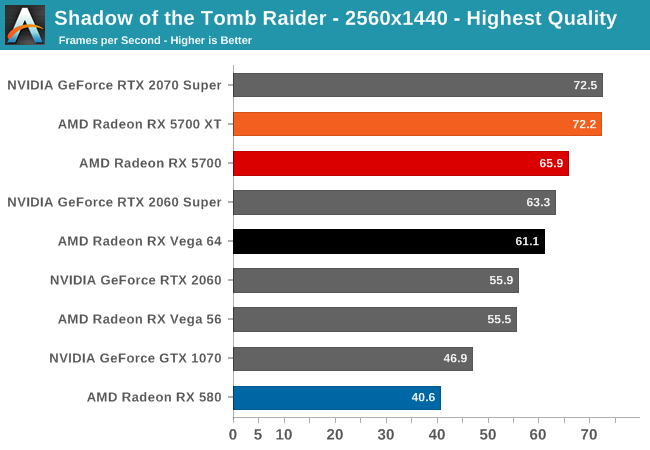
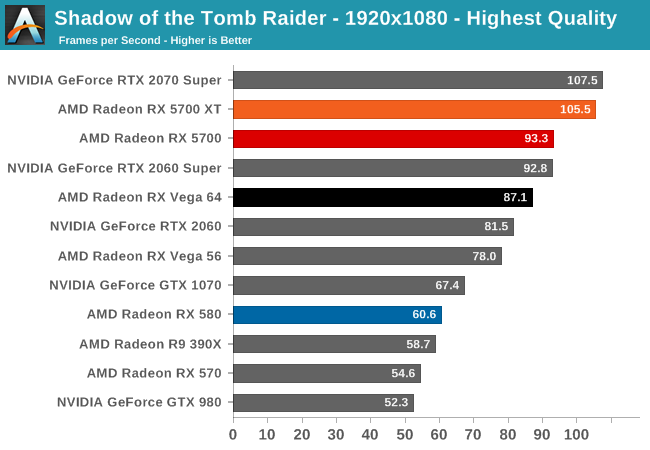
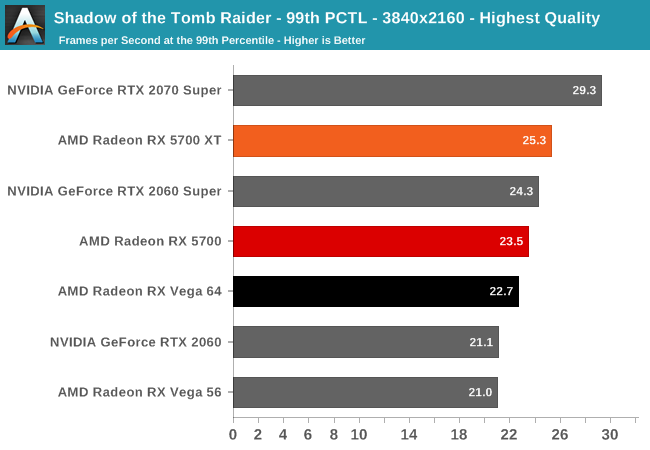
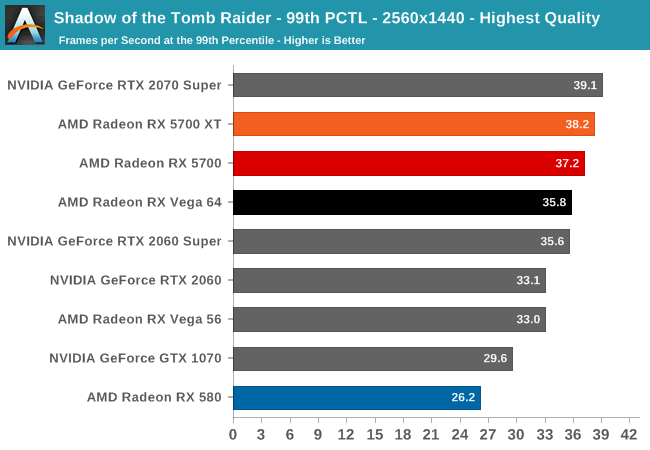
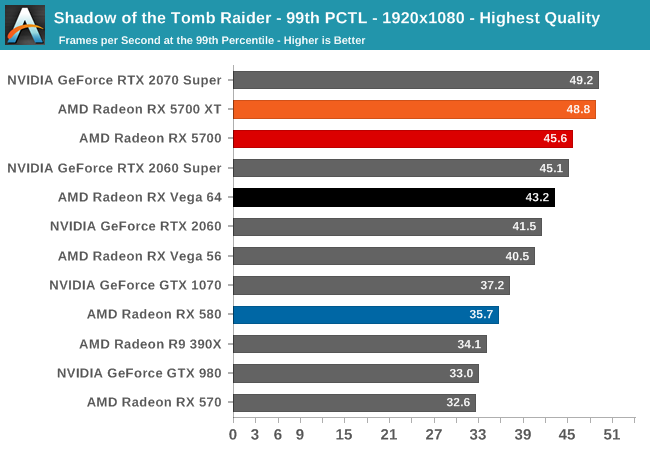
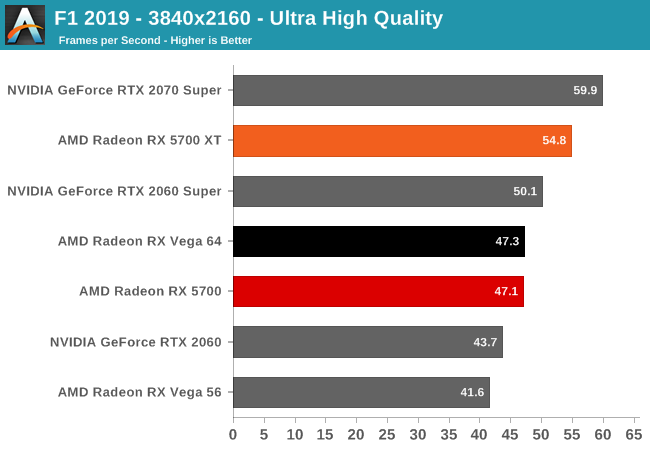
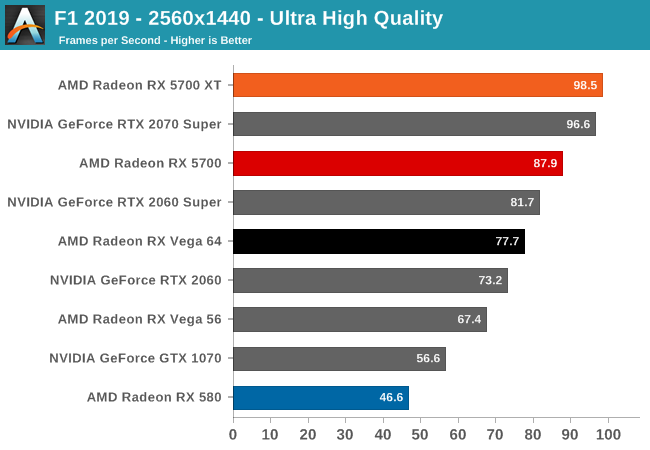



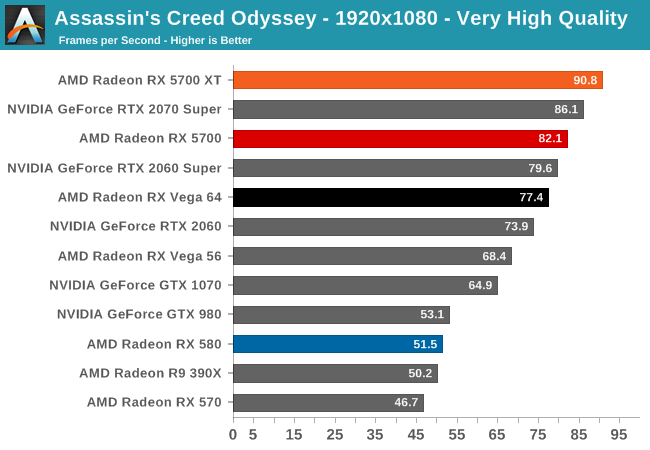

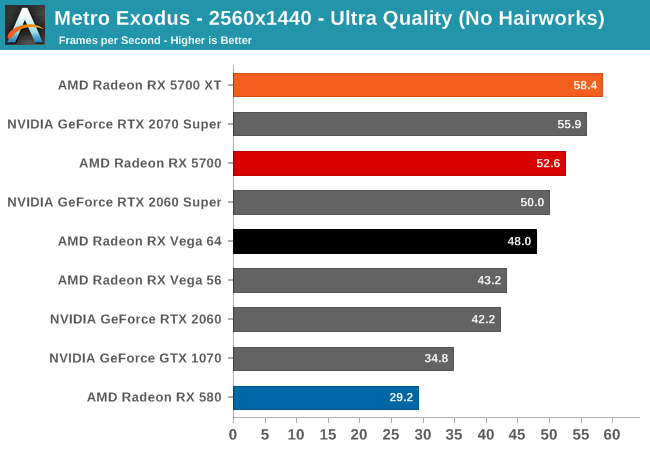

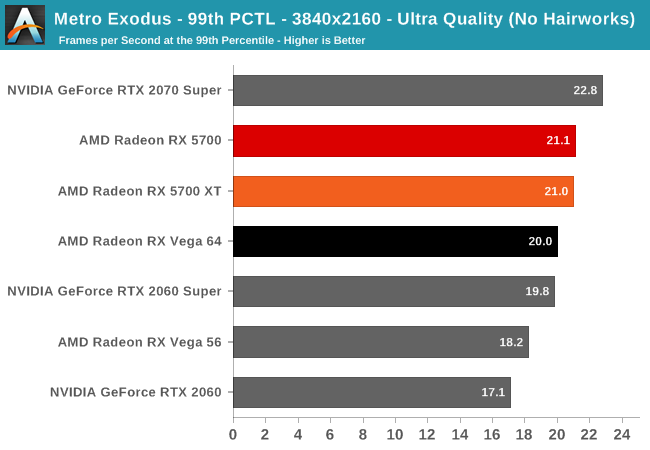
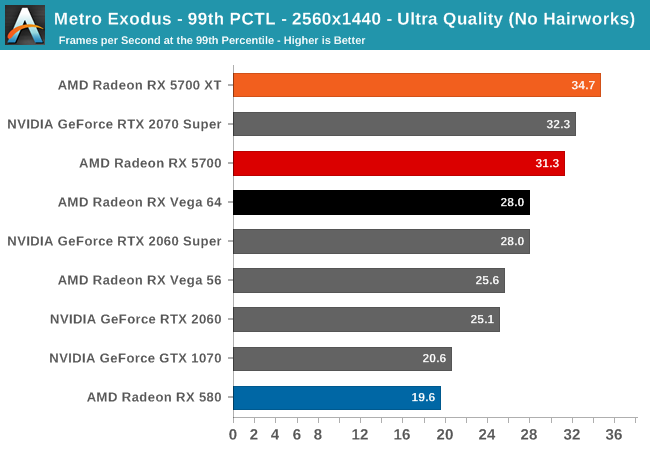
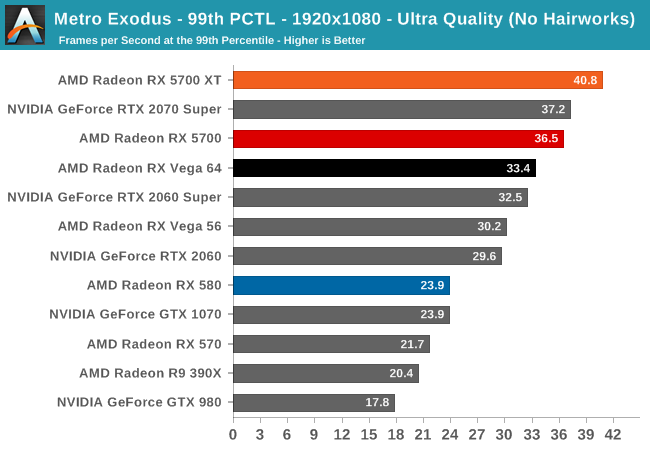
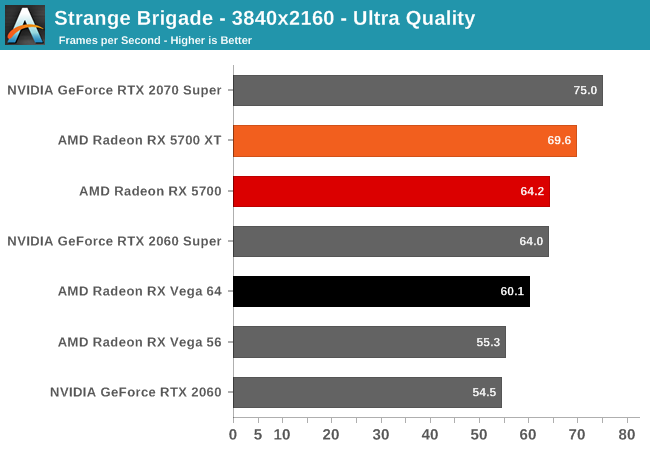
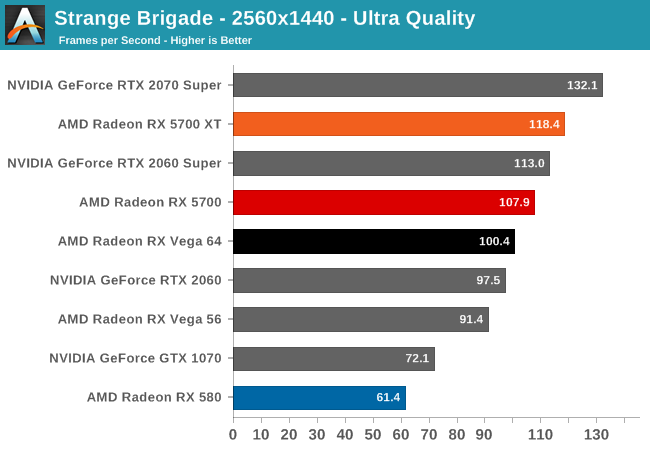
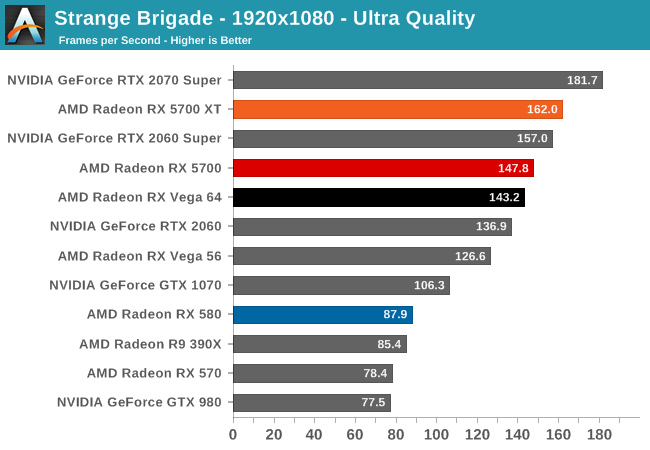
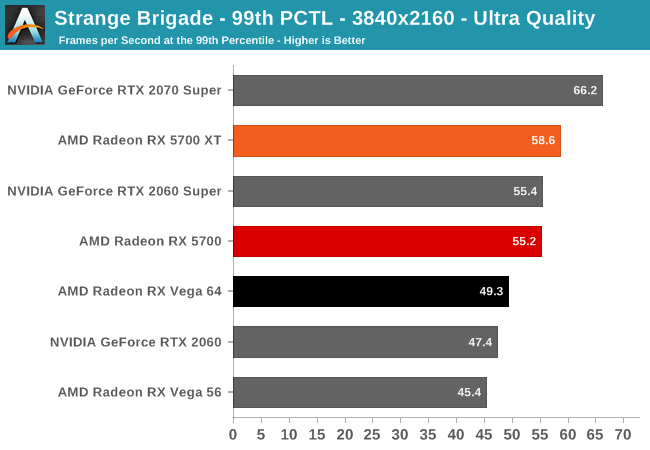
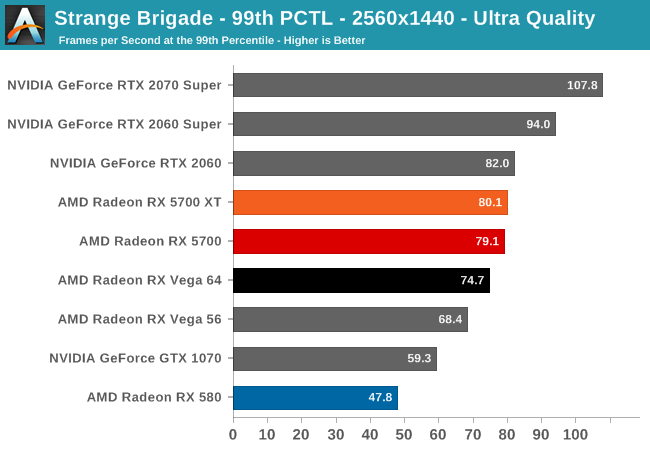

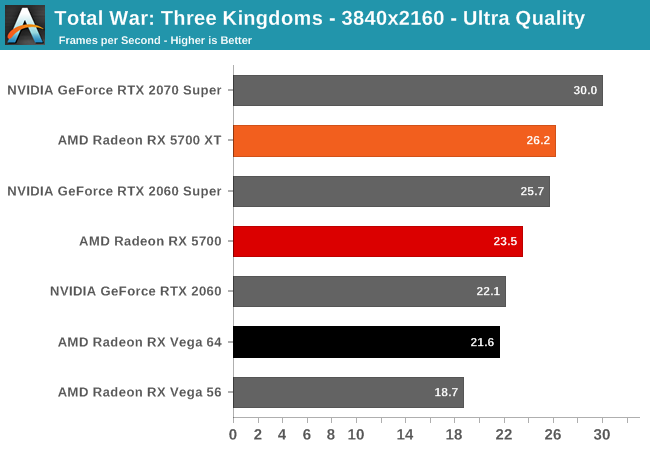

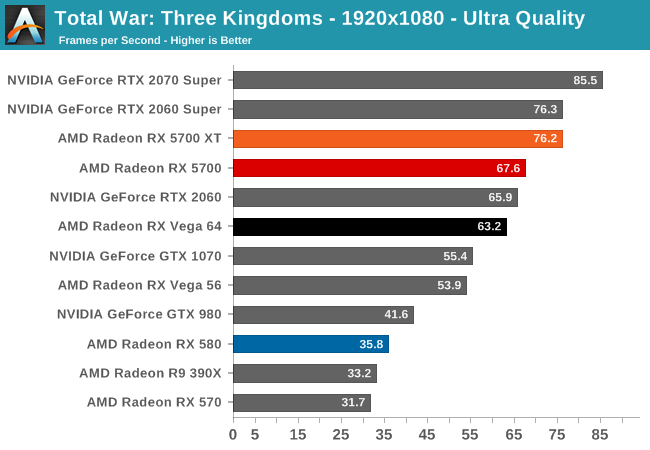
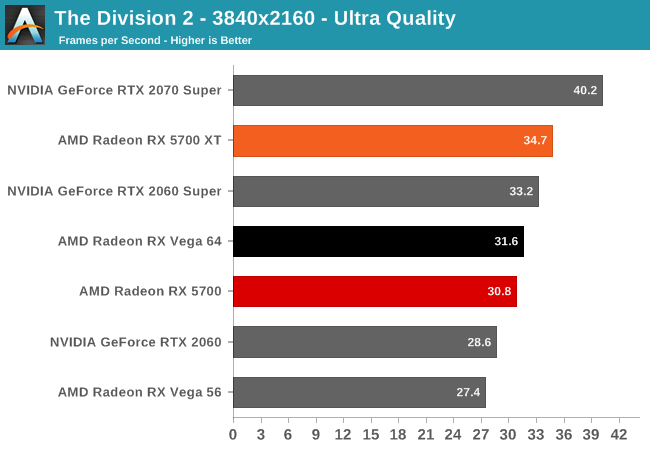

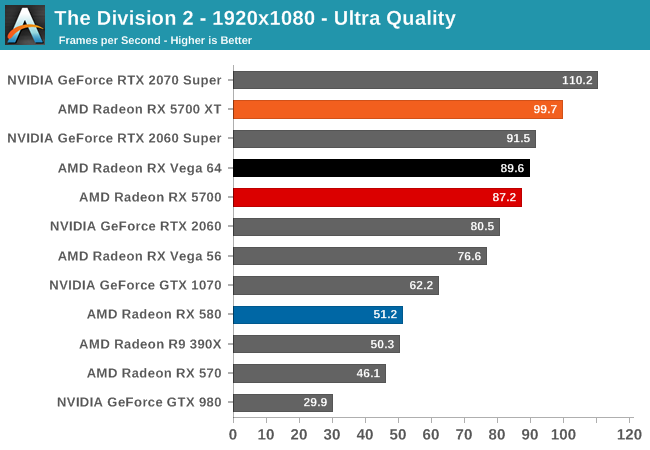
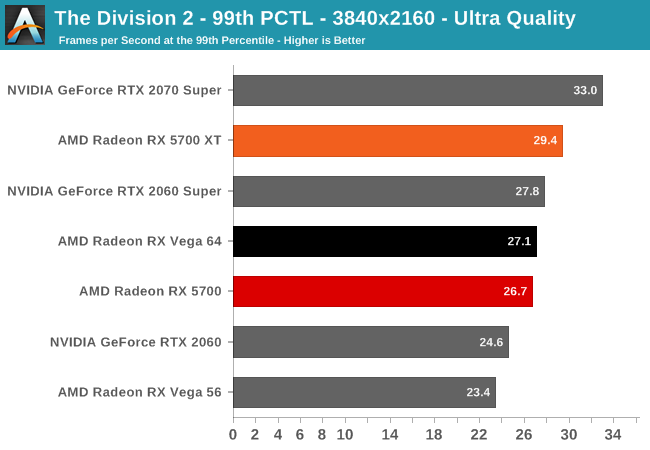
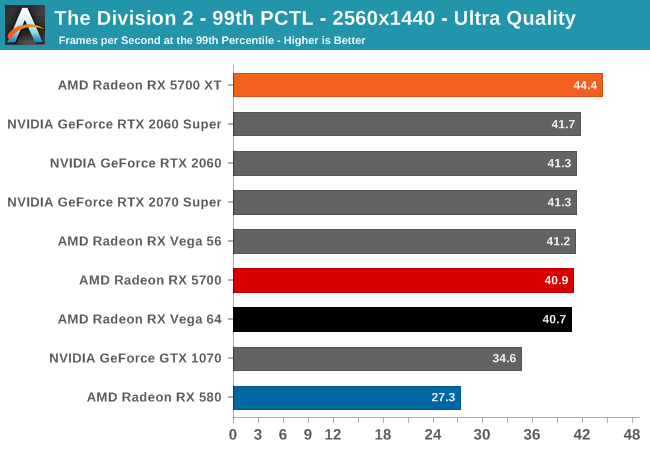
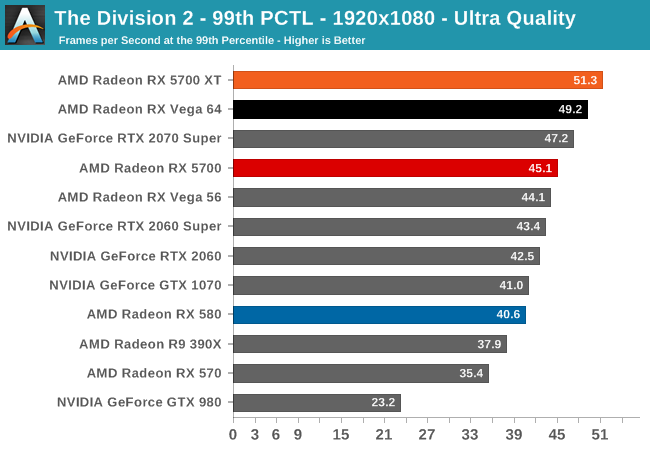
Now a definitely venerable title, GTA V is a veteran of beyond game suites that is nonetheless graphically traumatic as they come. As an older DX11 identify, it offers a glimpse into the graphically in depth video games of yesteryear that do not comprise the state-of-the-art functions. Originally released for consoles in2019, the PC port got here with a slew of graphical enhancements and options. Just as importantly, GTA V consists of a instead intensive and informative integrated benchmark, particularly unusual in open-world video games.
The settings are identical to its preceding appearances, that are custom as GTA V does no longer have presets. To recap, a "Very High" first-rate is used, in which all primary pics settings turned up to their highest placing, besides grass, which is at its personal very excessive placing. Meanwhile 4x MSAA is enabled for direct views and reflections. This putting additionally entails turning on some of the superior rendering functions - the game's lengthy shadows, excessive decision shadows, and excessive definition flight streaming - however no longer growing the view distance any in addition.
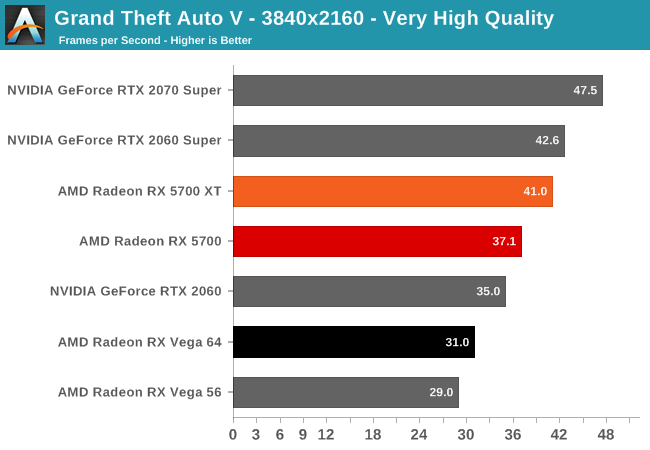
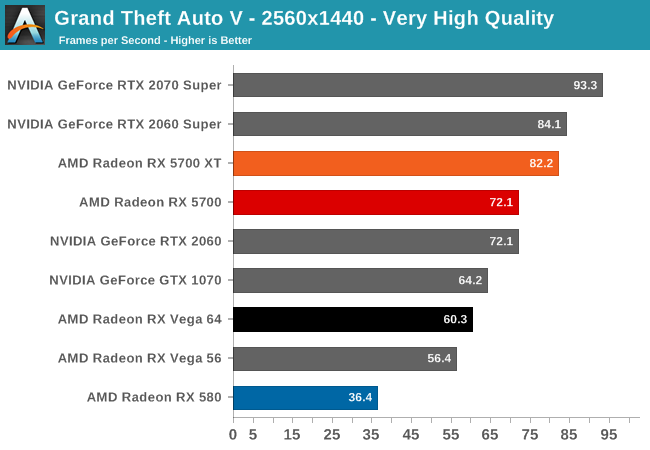
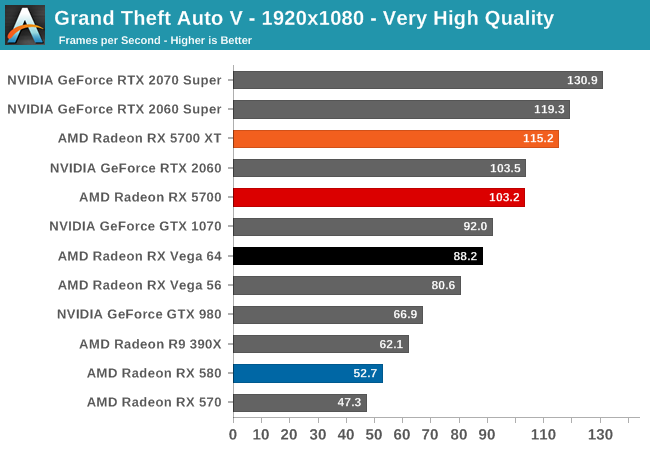

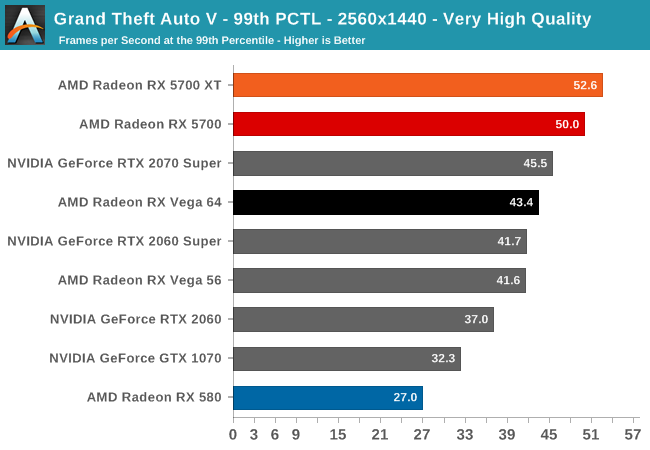
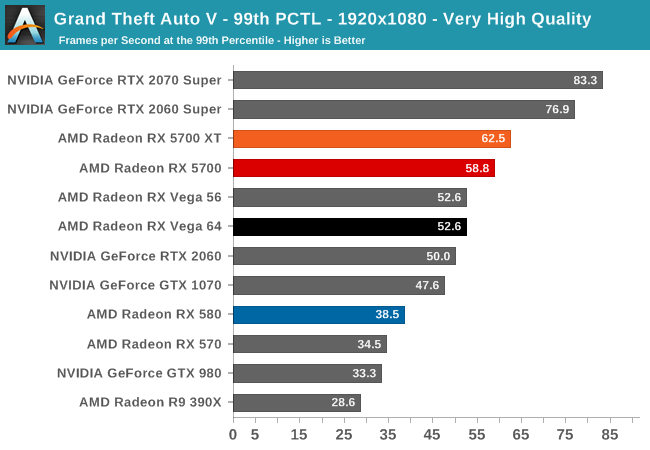
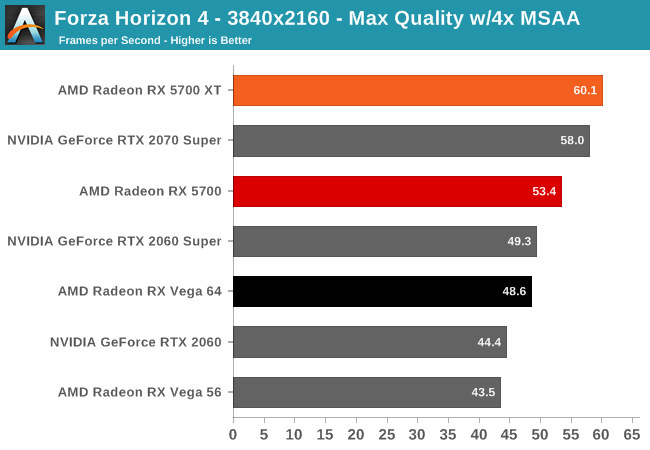
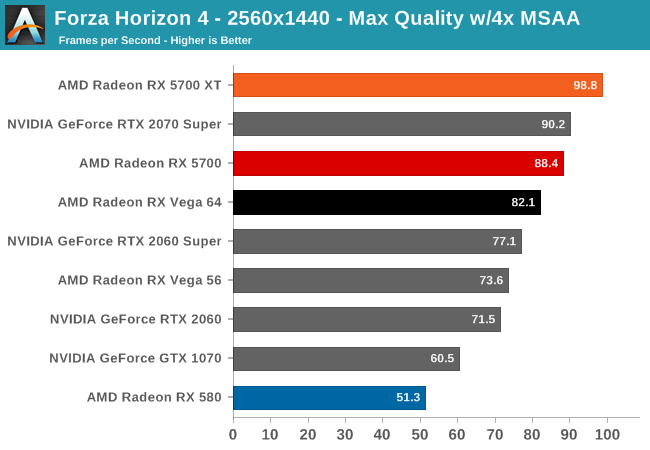

Unfortunately, as I mentioned earlier in my trying out observations, the country of AMD's OpenCL driving force stack at release is quite poor. Most of our compute benchmarks both failed to have their OpenCL kernels assemble, caused a Windows Timeout Detection and Recovery (TDR), or might just crash. As a end result, only three of our ordinary benchmarks had been executable right here, with Folding@Home, elements of CompuBench, and Blender all getting whammied.
And "executable" is the selection phrase here, due to the fact despite the fact that benchmarks like LuxMark would run, the scores the RX 5700 playing cards generated were nary better than the Radeon RX 580. This a component that they are able to effortlessly beat on uncooked FLOPs, let alone efficiency. So even if it runs, the state of AMD's OpenCL drivers is at a factor wherein those drivers are in all likelihood not indicative of whatever approximately Navi or the RDNA architecture; only that AMD has quite a few paintings left to go together with their compiler.
That said, it also serves to highlight the present day country of OpenCL standard. In brief, OpenCL doesn't have any true champions proper now. Creator Apple is now properly entrenched in its personal proprietary Metal surroundings, NVIDIA favors CUDA for obvious reasons, or even AMD's GPU compute efforts are more focused on the Linux-different ROCm platform, considering that that is what drives their Radeon Instinct income. As a result, the general kingdom of GPU computing at the Windows computing device is in a precarious region, and at this rate I would not be entirely surprised if destiny development is focused round compute shaders alternatively.
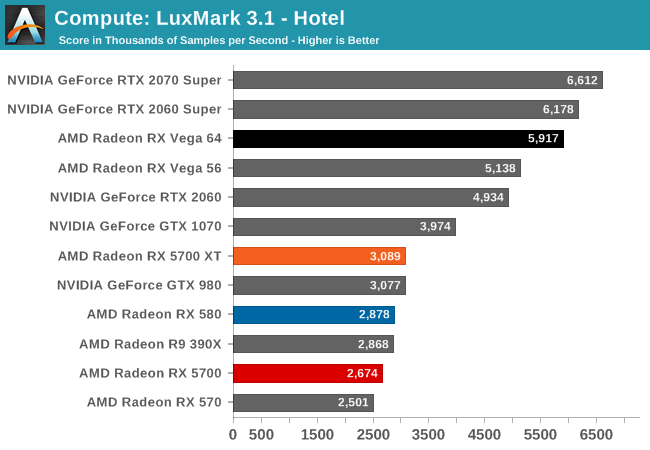
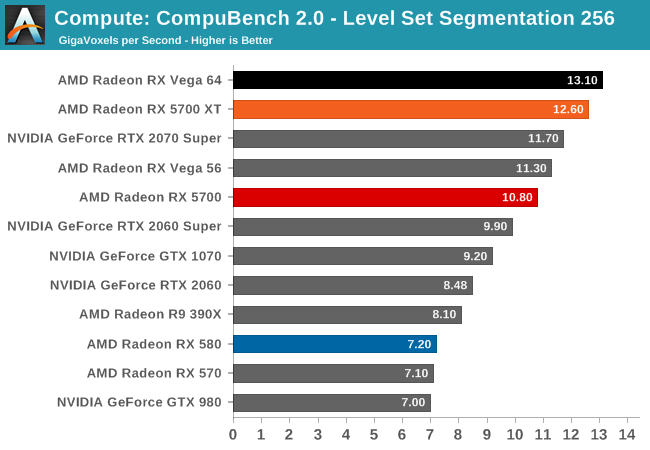
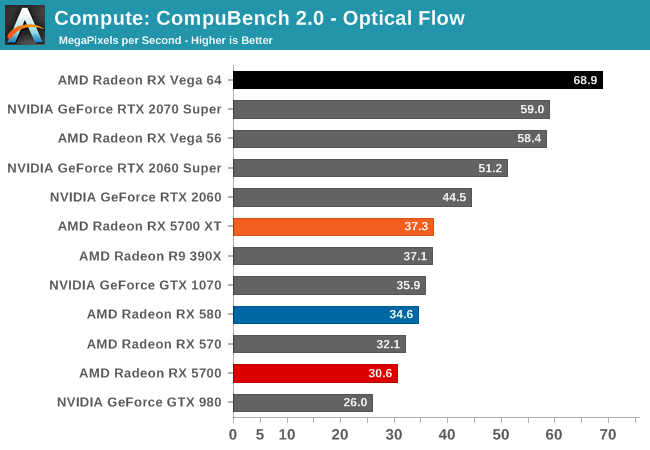
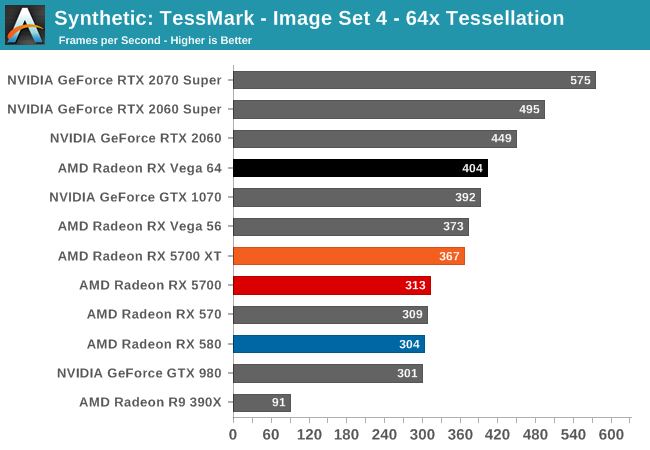
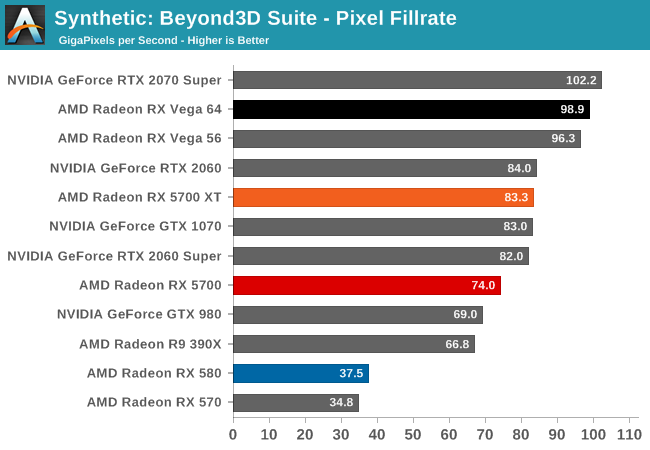

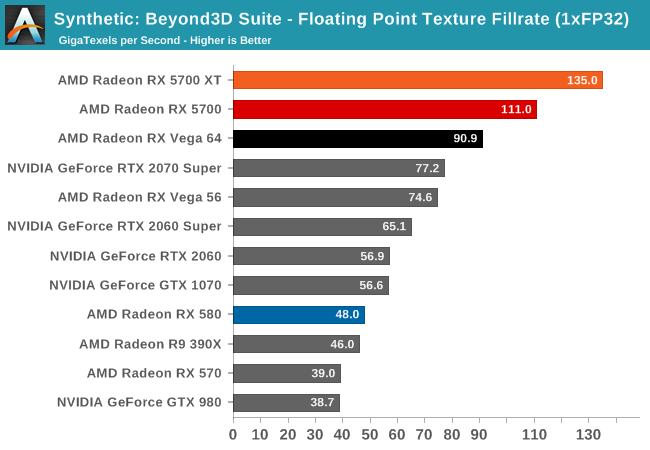
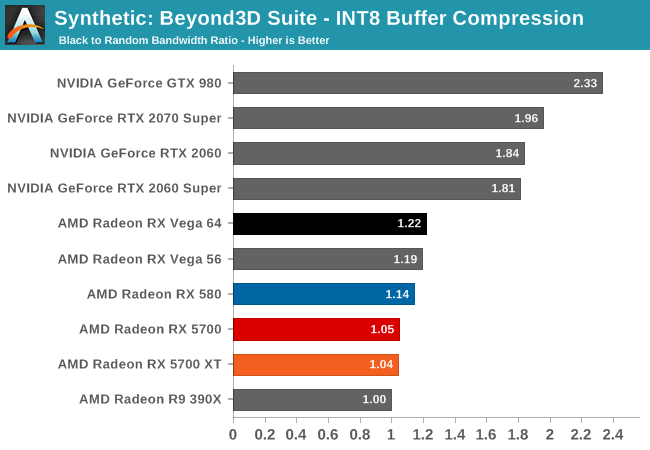
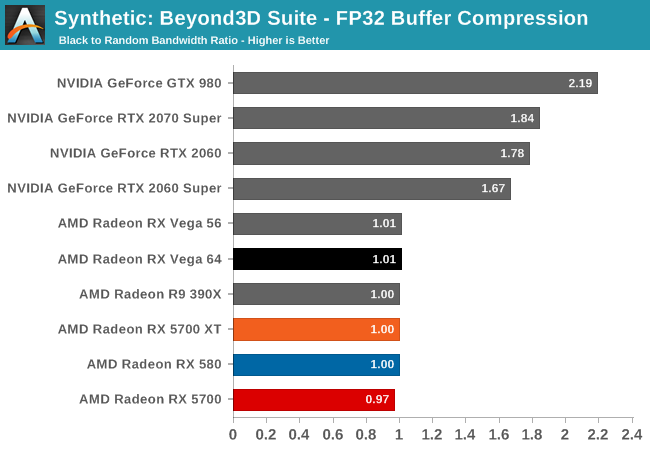
Last, however not least of path, is our have a look at electricity, temperatures, and noise tiers. While a excessive performing card is good in its very own proper, an first rate card can supply exquisite overall performance while additionally keeping electricity intake and the ensuing noise ranges in take a look at.
| Radeon Video Card Voltages | |||
| 5700 XT Max | 5700 Max | 5700 XT Idle | 5700 Idle |
| 1.2v | 1.025v | 0.725v | 0.775v |
Looking at enhance voltages for AMD's new midrange 7nm cards, we don't have too many points of assessment right now. But nevertheless, with AMD's drivers reporting a most boost voltage of one.2v for the 5700 XT, now not even the quite juiced Polaris 30-primarily based Radeon RX 590 took quite so much voltage. It might also very well be that TSMC's high-performance 7nm manner genuinely calls for a variety of voltage here, but it is able to also be a sign that AMD is driving the voltage/frequency curve pretty tough to get the ones high clockspeeds.
By assessment, the 5700 (vanilla) is a far extra mundane card. With its decrease clockspeeds, the card never is going above 1.025v in keeping with AMD's drivers. Which given the impact of voltage on energy consumption, it is simply a chunk sudden the unfold is so large.
| Radeon Video Card Average Clockspeeds (Rounded to the Nearest 10MHz) | ||
| Game | 5700 XT | 5700 |
| Max Boost Clock | 2044MHz | 1750MHz |
| Official Game Clock | 1755MHz | 1625MHz |
| Tomb Raider | 1780MHz | 1680MHz |
| F1 2019 | 1800MHz | 1650MHz |
| Assassin's Creed | 1900MHz | 1700MHz |
| Metro Exodus | 1780MHz | 1640MHz |
| Strange Brigade | 1780MHz | 1660MHz |
| Total War: TK | 1830MHz | 1690MHz |
| The Division 2 | 1760MHz | 1630MHz |
| Grand Theft Auto V | 1910MHz | 1690MHz |
| Forza Horizon 4 | 1870MHz | 1700MHz |
Meanwhile clockspeeds also are an exciting tale. AMD said that they might not be keeping back their chips' top improve clocks, and instead permit the silicon lottery run its direction, permitting the first-class chips to reach their maximum clockspeeds. The stop result is that our 5700 XT is permitted to clock up to 2044 MHz, 139MHz better than AMD's reputable Boost Clock metric guarantees. More to the point, that is a substaintial leap in frequency over each AMD's RX Vega and RX 500 series playing cards, which would top out around the mid-1500s.
That stated, the 5700 XT does not have the TDP or thermal cap to susntain this; I couldn't surely hit 2044MHz even in LuxMark, which as a "light" compute workload tends to deliver out the very best clockspeeds in processors. Instead, the quality clockspeed I become capable of hit turned into a bit decrease, at 2008MHz. So while the silicon is inclined, the physics of powering a Navi 10 at such excessive clockspeeds are every other depend.
At any charge, despite TDP and cooling retaining the 5700 XT greater all the way down to earth, the card continues to be able to hit high clockspeeds. More than 1/2 of the video games in our benchmark suite average clockspeeds of 1800MHz or higher, and a few get to 1900MHz. Even The Division 2, which seems to be the single most punishing recreation on this yr's suite in phrases of clockspeeds, holds the line at 1760MHz, proper above AMD's legitimate game clock.
As for the 5700, with its more conservative TDP, clockspeed specs, and probably a few binning, the cardboard doesn't attain quite as high. Its 1750MHz max boost clock is simply 25MHz over AMD's guaranteed clock. Meanwhile its clockspeeds are average a chunk greater densely packed than the 5700 XT's; all of our video games see average clockspeeds among 1630MHz and 1700MHz.
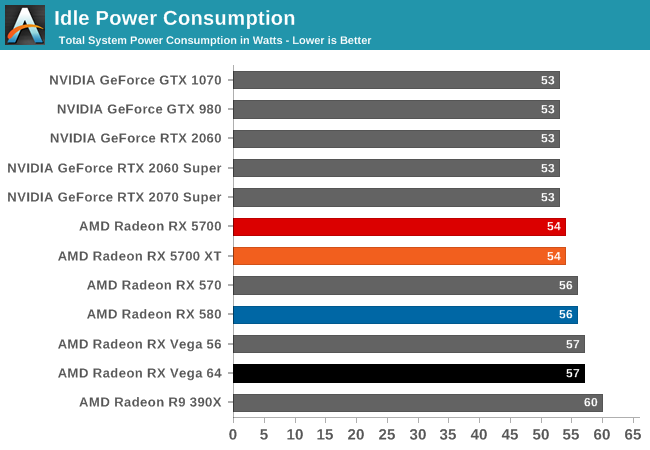
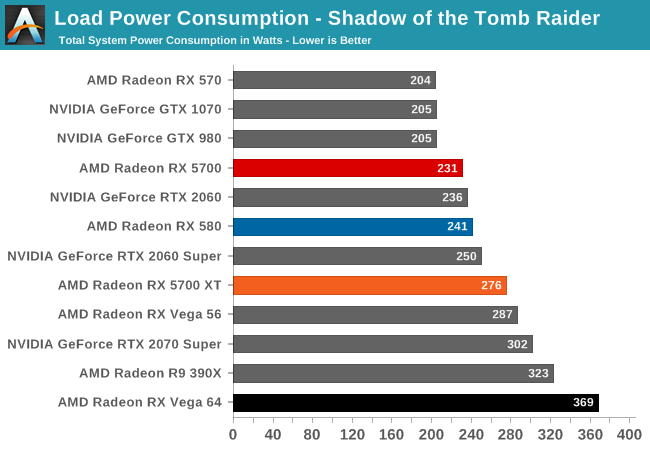
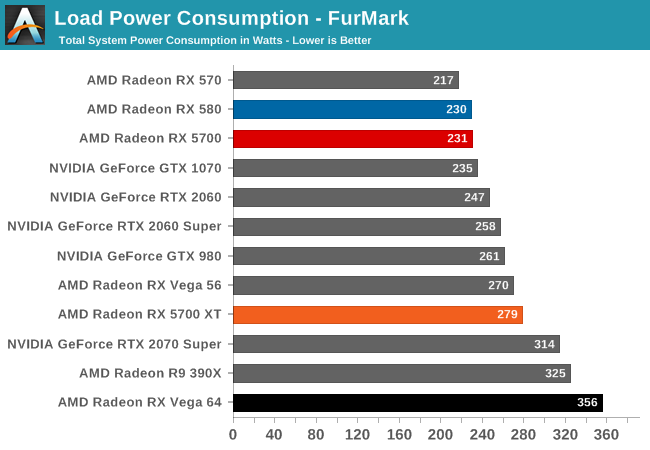


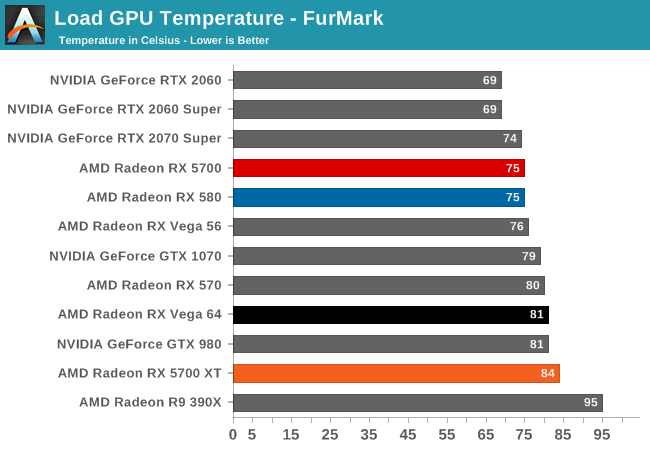
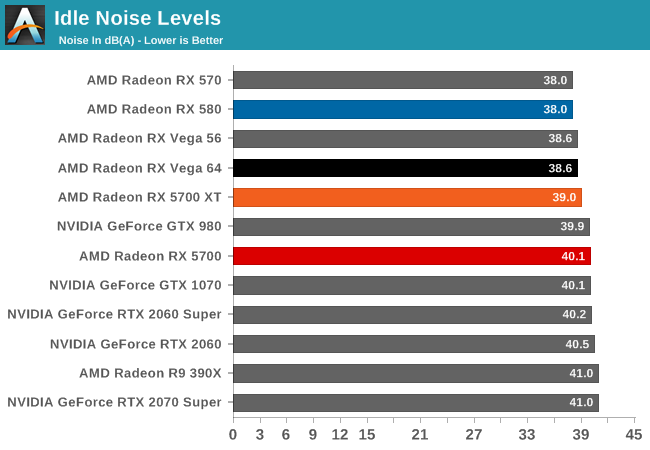
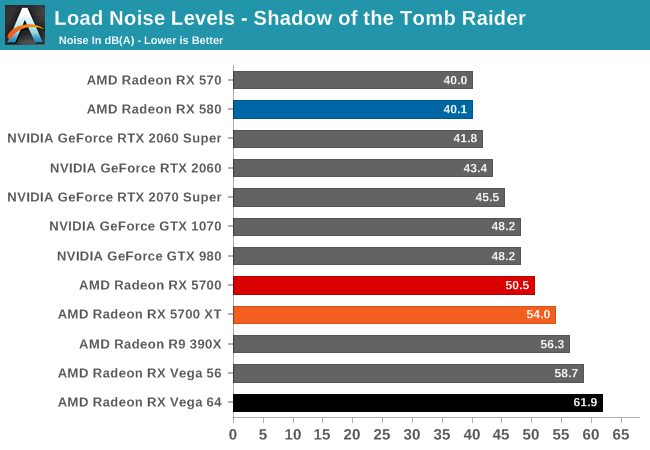
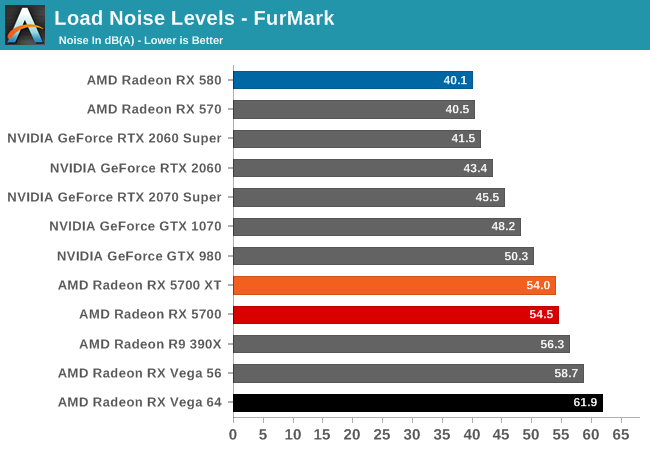
Easily the maximum exciting form of video card launch, the sunrise of a brand new GPU architecture is an extraordinary event that’s not to be neglected. New architectures deliver carriers a hazard to turn the gambling discipline on its metaphorical head, defying some expectations, setting new ones, and redefining what is feasible with a video card. Especially inside the case of these days’s release of the Radeon RX 5700 series cards, and their RDNA structure Navi GPUs, there’s a lot to unpack. But one manner or any other, that is without difficulty going to be the maximum vital and eventful video card release of 2019. So allow’s dig in.
For the ones of you who are analyzing this uncommon Sunday launch article with a cup of espresso (or are an AnandTech editor who’s been consuming it all night long), possibly it’s satisfactory to cut to the chase and then construct out from there. RDNA is a very vital structure for AMD, and it units the stage for loads of things to come back. At the identical time, but, it’s additionally the primary element in an extended-term plan for AMD, with AMD persevering with to similarly iterate on their design over the approaching years.
So how does AMD’s first example of RDNA stack up? For AMD and for consumers it’s plenty wanted progress. To be sure, the Radeon RX 5700 collection playing cards are not going to be Turing killers. But they may be aggressive in fee, performance, and strength consumption – the all-vital trifecta that AMD has trailed NVIDIA at for too many years now.
By the numbers then, the Radeon RX 5700 XT holds an 11% performance gain over its nearest competition, NVIDIA’s new GeForce RTX 2060 Super. Similarly, the RX 5700 (vanilla) takes a 12% gain over the RTX 2060 (vanilla). So NVIDIA become proper to shift their product stack ultimate week in practise for today’s AMD release, as AMD is now turning in the overall performance of what turned into remaining week a $500 video card for as little as $350. That’s a chief improvement in overall performance-in line with-dollar, to mention the least.
| Performance Summary | |||
| Price | Relative Performance | Relative Perf-Per-Dollar | |
| RX 5700 XT vs RTX 2060 Super | $399 | +11percent | +11percent |
| RX 5700 vs. RTX 2060 | $349 | +12percent | +12percent |
| RX 5700 XT vs RTX 2070 Super | $399/$499 | -5% | +19p.C |
And, luckily, none of this breaks the bank on energy intake both. The RX 5700 fares slightly better than its opponent, at the same time as the surprisingly-clocked RX 5700 XT is more strength-hungry in securing its overall performance gain over the RTX 2060 Super. Which, with the RX 5700 inside spitting distance of the RTX 2070 Super in terms of gaming overall performance, it gives you an amazing concept of what the strength value become for that closing 11%. For the moment then, while AMD hasn’t considerably shifted the power/performance curve as opposed to Turing, additionally they have avoided the equal form of painful performance chase that introduced toasty playing cards like the RX Vega 64 and RX 590.
If there's a real downside here, it’s that AMD’s blower-based coolers aren’t going to impress all of us with their overall performance, even via blower standards. The RX 5700 XT is a chunk louder than even NVIDIA’s GTX 1080 Ti, that's a flat-out higher TDP card. To make sure, it’s nicely ahead of the RX Vega collection right here (or even the reference 390X I dug out), however AMD has but to completely grasp the dark art of quiet blowers.
Tangentially, the largest threat for AMD here is they’ve performed a whole lot of this performance advantage with the aid of leaping beforehand of NVIDIA by means of a generation on the manufacturing aspect, tapping TSMC’s 7nm process. NVIDIA gets their very own hazard to faucet into the benefits of the brand new node as nicely, which all different elements held identical, is probably to tilt things in NVIDIA’s benefit once again. The fortunate element for AMD, as a minimum, is that NVIDIA doesn’t appear to be in a rush to get there, and we’re no longer watching for 7nm NVIDIA purchaser elements this yr.
The brilliant query for gamers then is whether or not AMD’s overall performance and fee advantage is sufficient to offset their feature deficit. With AMD’s efforts completely invested into the backend in their RDNA structure in place of including person-dealing with functions, the RX 5700 series doesn’t convey any marquee hardware functions to the table, and it doesn’t do whatever to capture up to NVIDIA’s RTX cards. The stop result is that the Radeon playing cards are faster for the charge, but NVIDIA brings such things as ray tracing and variable fee shading that AMD cannot.
Truthfully, there's no accurate solution right here – at the least not one on the way to be universally agreed upon. Variable charge shading is simply a (cool) performance optimization, however hardware elevated ray tracing is some thing more. And NVIDIA has been operating very, very difficult to get developers to undertake it. The current crop of video games arguably isn’t the use of it to earth-shattering impact (though Metro is coming close), but the slate for 2020 includes several high-profile games. So it comes down to a query of whether or not to take the better overall performance now and danger the worry of missing out later, or taking ray tracing now for an unproven destiny?
Ultimately, I don’t assume there’s a horrific purchase right here between the RX 5700 XT and the RTX 2060 Super it competes with; each are solid cards with a few precise pros and cons, and both one ought to make most game enthusiasts satisfied. As for the vanilla showdown between the RX 5700 and RTX 2060, AMD’s hand is a whole lot stronger here (or instead, NVIDIA’s is weaker), which makes for an clean selection. The RX 5700 is quicker, barely less electricity hungry, and it features a complete 8GB of VRAM. The RTX 2060 changed into usually a risky buy with its mere 6GB of VRAM, and now with the RX 5700 there’s truely no motive exact enough to do not forget it, even with ray tracing.
As for gamers searching out an upgrade, things are a bit extra blended. The front of the RX 5700 collection has driven midrange video card expenses down, but not by using first-rate quantities. On a natural overall performance foundation, AMD’s new playing cards would be very solid upgrades over the RX 500 collection in terms of performance and with comparable energy usage, but then in addition they fee nearly twice as an awful lot because the RX 500 series did at launch. The RX 5700 series is perhaps satisfactory defined as a replacement for the RX Vega series and a successor to the RX 500 series; however it isn't always a successor to RX Vega, nor is it a right substitute for RX 500. Instead, the brand new cards are a more significant upgrade for any GTX 970 or R9 390(X) holders who're searching out their subsequent midrange card. In which case the RX 5700 collection delivers more overall performance in leaps and boundaries.
In the intervening time, it’s a welcome sight to see a extra aggressive AMD inside the video card marketplace. With AMD not-so-concentrically launching a new range of first-rate CPUs today, a new cycle of machine builds is kicking off, which the RX 5700 collection is properly-located to capture a chunk of. Ultimately then, whilst the Radeon RX 5700 collection isn't always AMD’s Ryzen 3000 moment for video cards, it’s a return to form for the business enterprise and it’s top notch to see competition renewed inside the video card space. Now to peer in which the rest of AMD’s adventure with Navi takes them over the coming months.
Let's block commercials! (Why?)
//www.anandtech.com/show/14618/the-amd-radeon-rx-5700-xt-rx-5700-review
2019-07-07 17:00:00Z
52780327749348


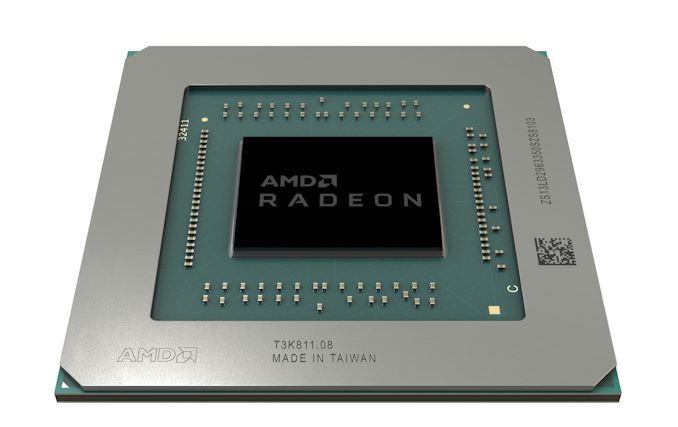

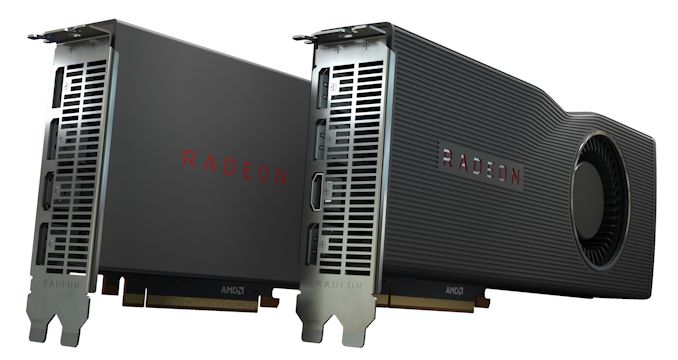
0 Response to "The AMD Radeon RX 5700 XT & RX 5700 Review Navi Renews Competition in the Midrange Market AnandTech"
Post a Comment